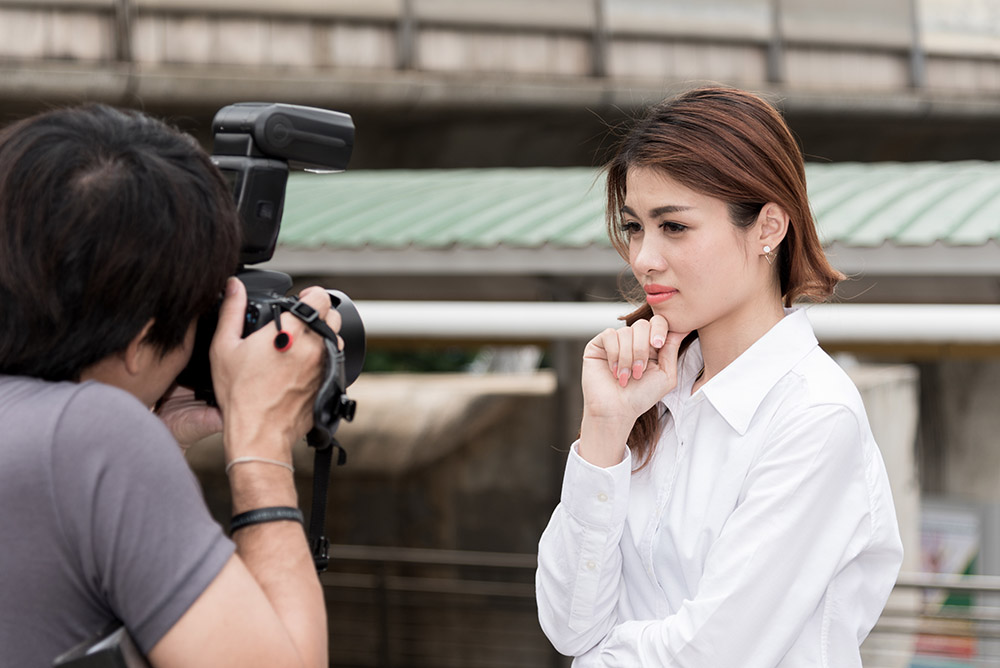Perfecting the Portrait

When you begin your journey down the road as a professional photographer, taking portraits may not sound like the most intriguing or adventurous way to go about it. Although your future may hold taking world class pictures of wild animals, civil wars or dangerous mountains, perfecting the portrait can allow you to enhance your photography skills and make some money on the side. So, how can you take the perfect portrait?
Your camera and lens play one of the most important roles in making sure you take a professional portrait shot. The dynamics of tweaking both of them can be difficult for beginners. A wide angle lens shot from below your subject will make them look taller and give you the most pronounced shot. Depending on if you are taking a headshot or beauty portrait, the distance you take a picture will also differ in where you place the camera. Whatever is closest to the camera in either case will look the biggest when using a wide angle lens, so pronounced noses can be specifically challenging.
So, you know what kind of lens to use and where to place your camera during the shoot. What's next? It may seem obvious and simple, but focus on the eyes. They are the gateways to the soul, so they should be the focus of your picture when shooting and editing. Especially when shooting in uncontrollable conditions, focusing on the eyes can take away from how shallow your depth of field is.
Lastly, camera settings will ensure that your picture comes out perfect while paired with proper dynamic placements mentioned above. If you have a metering system on your camera, the picture will benefit immensely when taking a portrait. It determines how much light should be let into the camera to make a correct exposure. Though this is convenient, it doesn’t guarantee the perfect shot. Metering determines the median of light in pictures, so when taking a shot with extreme brightness or darkness, things can be difficult. When working with light skin tones or pictures with lots of white, try increasing your cameras exposure compensation to +1 and work your way in different directions after looking at the picture.
Taking the perfect portrait can be affected by many different circumstances, but these tips can give you control of certain aspects that increase your chances of getting a professional grade shot. Also, practice! Ask some friends or family to practice with you and when it comes to a professional job, you will know all the hurdles to jump over and give your client the perfect shot.
-- article by Linda Wu



